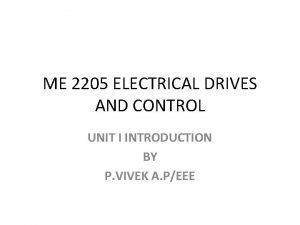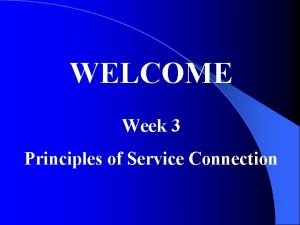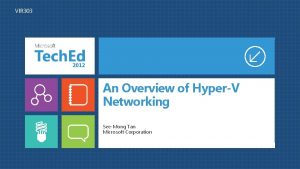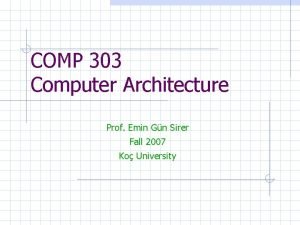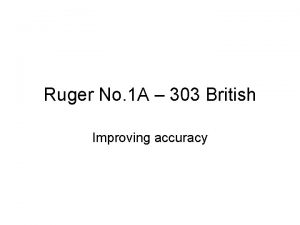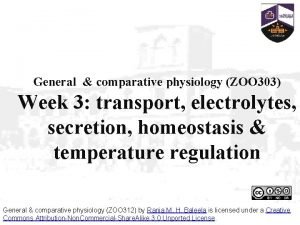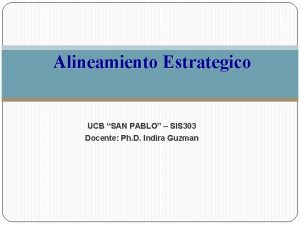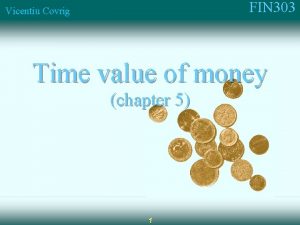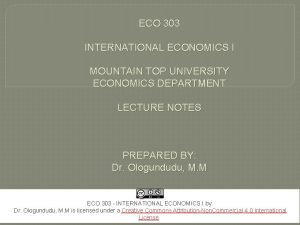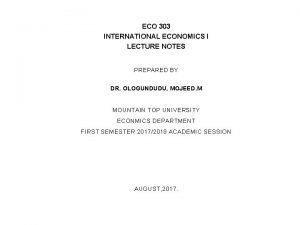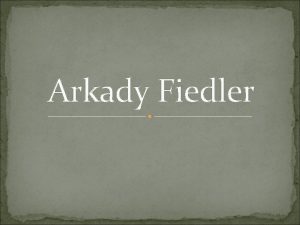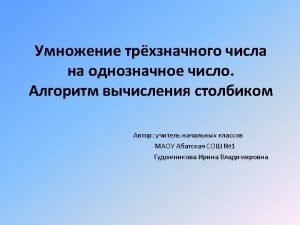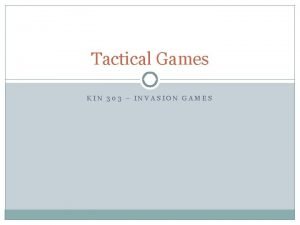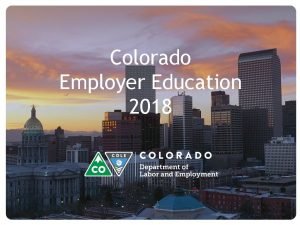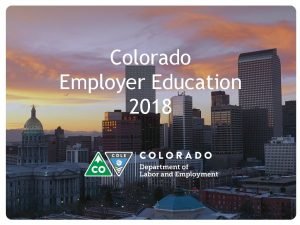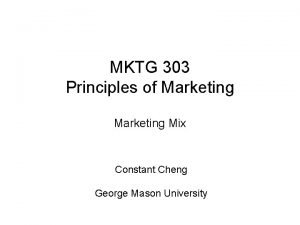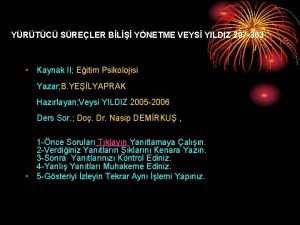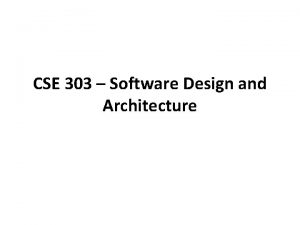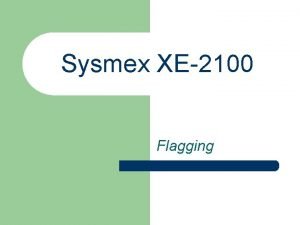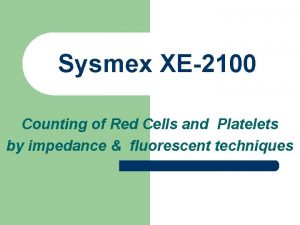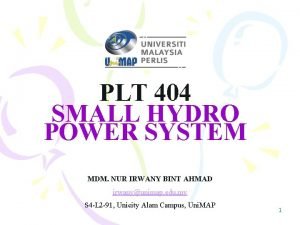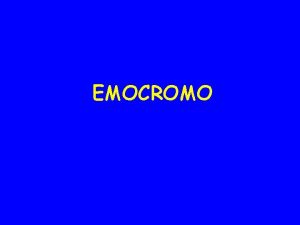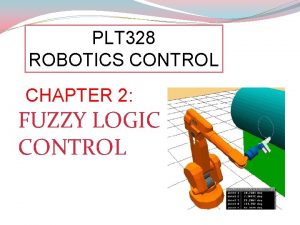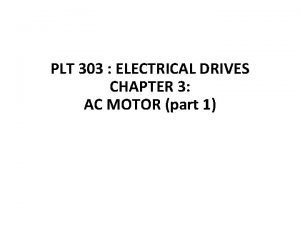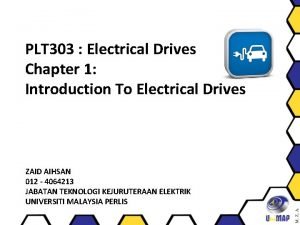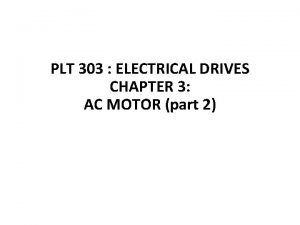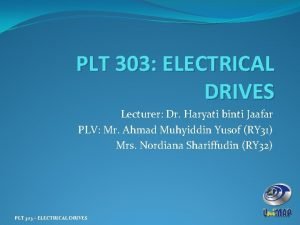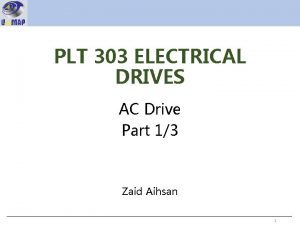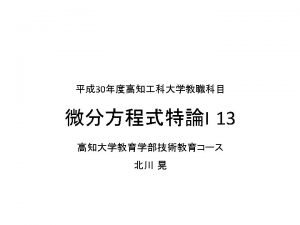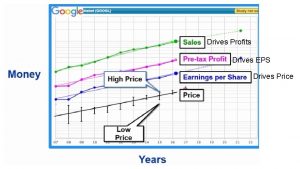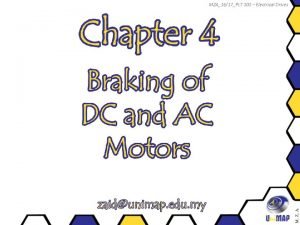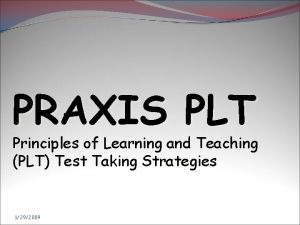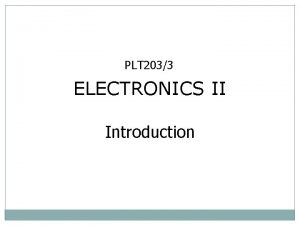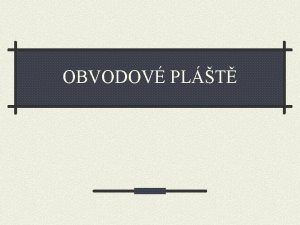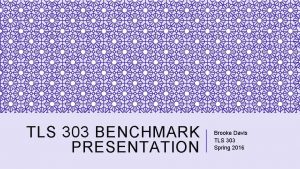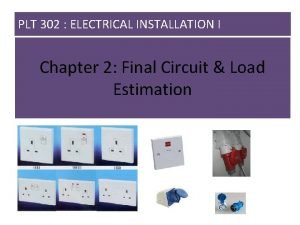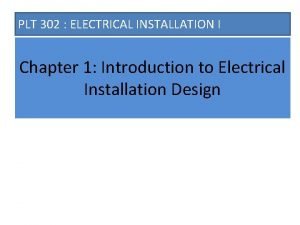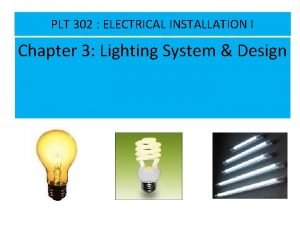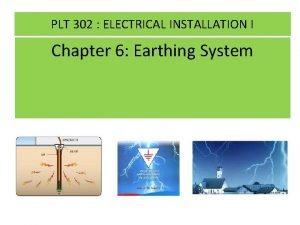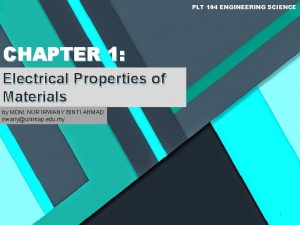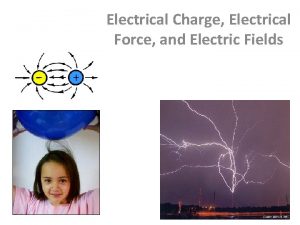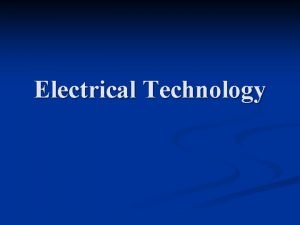PLT 303 ELECTRICAL DRIVES CHAPTER 2 DC DRIVES























- Slides: 23

PLT 303 : ELECTRICAL DRIVES CHAPTER 2: DC DRIVES (part a) PLT 303 – ELECTRICAL DRIVES

What to learn in this chapter? • Introduction of DC Motor, types and operating modes. • The characteristic, steady state equations, model, speed control of DC motor. • Armature resistance value, armature voltage, field voltage • Firing angle of single phase half-wave and full-wave AC to DC converter. PLT 303 – ELECTRICAL DRIVES

DC MOTOR • A DC Machine is an electro-mechanical energy conversion device. • It can convert mechanical power into electrical power. • When output electrical power is DC , it is called DC Generator. • When it converts DC electrical power into mechanical power , it is known as DC Motor. PLT 303 – ELECTRICAL DRIVES

MAIN COMPONENT OF DC MACHINE • The DC machine are popular because the starting torque of DC machine is large, some of them can be used with either AC or DC supply & they are cheap, simple to operate & control. • The main components of the DC machine are: field circuit, armature circuit, commutator & brushes. • The field is normally an electric magnet fed by a DC power source. In small machines, the field is energized by permanent magnet. PLT 303 – ELECTRICAL DRIVES

MAIN COMPONENT OF DC MACHINE • The armature circuit is composed of the windings, commutator & brushes. The windings & the commutator are mounted on the rotor shaft which will rotate together with the shaft. • The brushes are mounted on the stator & are stationary but they are in contact with the rotating commutator segments. • The brushes allow the commutator segments to be connected to an external DC source. PLT 303 – ELECTRICAL DRIVES

MAIN COMPONENT OF DC MACHINE • The rotor windings are composed of several coils; each has two (2) terminals connected to the commutator segments on the opposite sides. • The commutator segments are electrically isolated from one another. The segments are exposed & the brushes touch two (2) opposing segments. PLT 303 – ELECTRICAL DRIVES

CONSTRUCTION OF DC MACHINE PLT 303 – ELECTRICAL DRIVES

CONSTRUCTION OF DC MACHINE PLT 303 – ELECTRICAL DRIVES

CONSTRUCTION OF DC MACHINE PLT 303 – ELECTRICAL DRIVES

OPERATION OF TYPICAL DC MACHINE • The stator field produces flux, φ from the north, N pole to the south, S pole. The brushes touch the terminals of the rotor coil under the pole. • When the brushes are connected to an external DC source of potential V, a current, I enters the terminal of the rotor coil under the N pole & exits from the terminal under the S pole. PLT 303 – ELECTRICAL DRIVES

OPERATION OF TYPICAL DC MACHINE • The presence of the stator flux & rotor current produces a force, F on the coil known as the Lorentz force. • This force produces torque that rotates the armature counterclockwise. • The coil that carries the current moves away from the brush & is disconnected from the external source. • The next coil moves under the brush & this produces a continuous force & continuous rotation. PLT 303 – ELECTRICAL DRIVES


TYPES OF DC MOTOR • Separately-excited – the field winding is composed of a large number of turns with small cross-section wire. This type of field winding is designed to withstand the rated voltage of the motor. The field & armature circuits are excited by separate sources. PLT 303 – ELECTRICAL DRIVES

TYPES OF DC MOTOR • Self-excited : Series, Shunt and Compound • Series – the field winding is composed of a small number of turns with a large cross-section wire. This type is designed to carry large currents & is connected in series with the armature winding. • Shunt – the field circuit is the same as that for seperately-excited machines but the field winding is connected in parallel with the armature circuit. A common source is used for the field & armature windings. • Compound – this type uses the shunt & series windings. PLT 303 – ELECTRICAL DRIVES

CHARACTERISTICS OF DC MOTOR • The important characteristics of DC motors are : 1) Speed - armature current ( Load ) characteristics 2) Torque - armature current ( Load ) characteristics 3) Speed - Torque characteristics PLT 303 – ELECTRICAL DRIVES

SEPARATELY–EXCITED MOTOR • The equivalent circuit of a separately-excited motor which consists of field & armature circuit is shown below. • The field circuit is mounted on the stator & is energized by a separate DC source, Vf. The field current is: • In small motor, the field circuit is a permanent magnet. Thus the flux of the field is constant & cannot be adjusted. PLT 303 – ELECTRICAL DRIVES

SEPARATELY–EXCITED MOTOR • The armature circuit is mounted on the rotor & is composed of a rotor winding & commutator segments. • The external voltage source, Vt is connected to the armature to drive the load via the commutator segments & brushes. • Relative to the field circuit, the armature carries a much higher current. Thus, the armature resistance, Ra is much smaller than the field resistance, Rf. • The field voltage is usually in the same order of magnitude as the armature voltage. PLT 303 – ELECTRICAL DRIVES

SEPARATELY–EXCITED MOTOR • The armature current, Ia is: • The developed power, Pd is: • The back-emf, Ea is: • The developed torque, Td is: PLT 303 – ELECTRICAL DRIVES

SEPARATELY–EXCITED MOTOR • Speed-torque equation (substituting Ia & Ea into Td equation): PLT 303 – ELECTRICAL DRIVES

SEPARATELY–EXCITED MOTOR • At no-load operation, assuming the rotational losses can be ignored, the developed torque, Td & Ia is 0, which makes the no-load speed is: • In steady-state, develop torque Td is equal to load torque Tm. At given value of Tm , speed of motor drops by amount of Δω. • Speed of motor can be expressed by using no-load and speed drop. PLT 303 – ELECTRICAL DRIVES

SEPARATELY–EXCITED MOTOR • Speed-current equation (replaced with Ia ): PLT 303 – ELECTRICAL DRIVES

SEPARATELY–EXCITED MOTOR • At starting, assuming the motor is initially at rest, the motor speed is 0. Thus, the starting torque, Tst & starting current, Ist are: • From the Tst equation, Tst is proportional to the source voltage. If Vt is at rated value, Tst is very large. Hence, this feature is highly desirable when starting under heavy loading conditions. • However, Ist is also proportional to the source voltage & when Vt is at rated value during starting, Ist will be large & might damage the motor windings. PLT 303 – ELECTRICAL DRIVES

Thank You “SET YOUR GOAL HIGH AND DON’T STOP ‘TIL YOU GET THERE”
 Electrical drives and control
Electrical drives and control 38cfr3.303
38cfr3.303 Vir 303
Vir 303 Emin gun sirer
Emin gun sirer Ruger no 1 303 british review
Ruger no 1 303 british review Zool 303
Zool 303 Sis-303
Sis-303 Fin 303
Fin 303 Kravis and linder theory of trade
Kravis and linder theory of trade Eco 303
Eco 303 Dywizjon 303 klp
Dywizjon 303 klp 426 499
426 499 Life orientation grade 7 term 2 activities
Life orientation grade 7 term 2 activities Uib290
Uib290 Colorado uib
Colorado uib Mktg 303
Mktg 303 Bilgiyi işleme modelinin eğitim ortamında uygulamaları
Bilgiyi işleme modelinin eğitim ortamında uygulamaları Cse 303
Cse 303 Wbc abn scattergram
Wbc abn scattergram Refurbished sysmex xe2100d
Refurbished sysmex xe2100d Micro hydro power
Micro hydro power Istogramma rbc
Istogramma rbc Plt scheme
Plt scheme Plt fuzzy set
Plt fuzzy set
